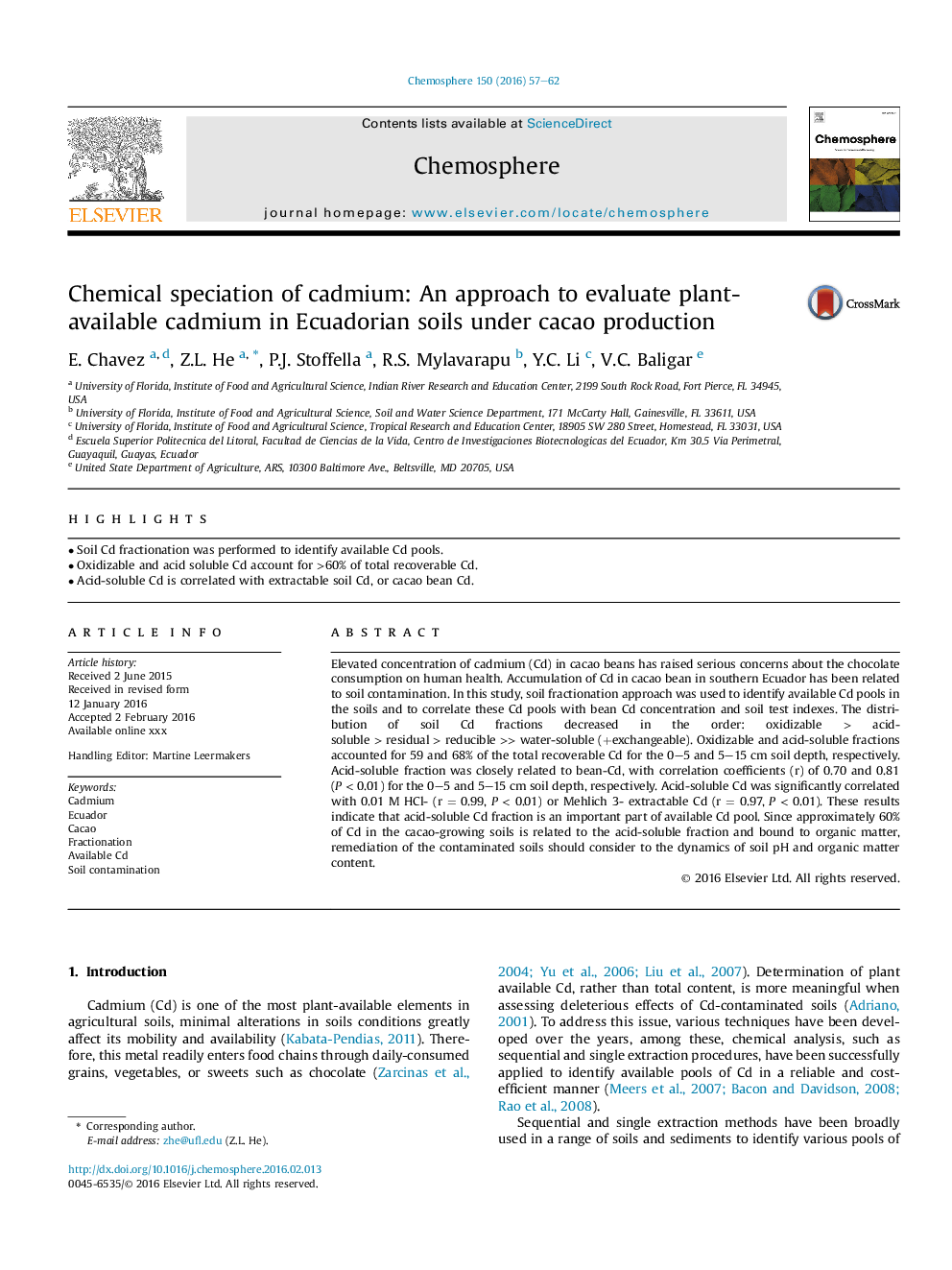| Article ID | Journal | Published Year | Pages | File Type |
|---|---|---|---|---|
| 6306755 | Chemosphere | 2016 | 6 Pages |
Abstract
Elevated concentration of cadmium (Cd) in cacao beans has raised serious concerns about the chocolate consumption on human health. Accumulation of Cd in cacao bean in southern Ecuador has been related to soil contamination. In this study, soil fractionation approach was used to identify available Cd pools in the soils and to correlate these Cd pools with bean Cd concentration and soil test indexes. The distribution of soil Cd fractions decreased in the order: oxidizable > acid-soluble > residual > reducible >> water-soluble (+exchangeable). Oxidizable and acid-soluble fractions accounted for 59 and 68% of the total recoverable Cd for the 0-5 and 5-15 cm soil depth, respectively. Acid-soluble fraction was closely related to bean-Cd, with correlation coefficients (r) of 0.70 and 0.81 (P < 0.01) for the 0-5 and 5-15 cm soil depth, respectively. Acid-soluble Cd was significantly correlated with 0.01 M HCl- (r = 0.99, P < 0.01) or Mehlich 3- extractable Cd (r = 0.97, P < 0.01). These results indicate that acid-soluble Cd fraction is an important part of available Cd pool. Since approximately 60% of Cd in the cacao-growing soils is related to the acid-soluble fraction and bound to organic matter, remediation of the contaminated soils should consider to the dynamics of soil pH and organic matter content.
Related Topics
Life Sciences
Environmental Science
Environmental Chemistry
Authors
E. Chavez, Z.L. He, P.J. Stoffella, R.S. Mylavarapu, Y.C. Li, V.C. Baligar,
